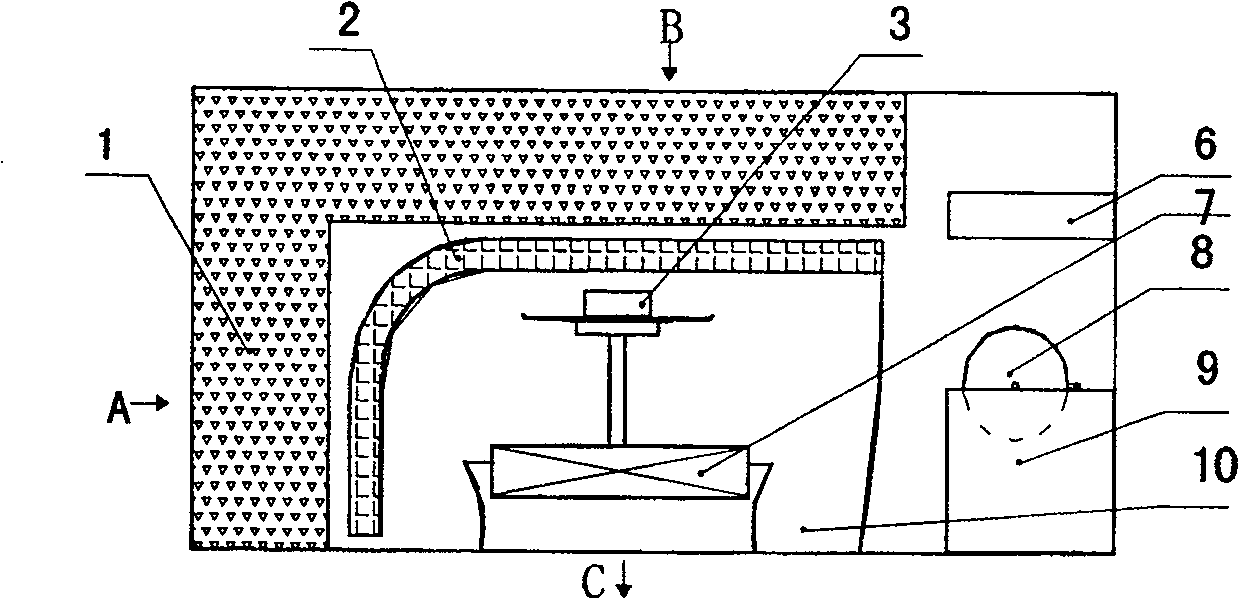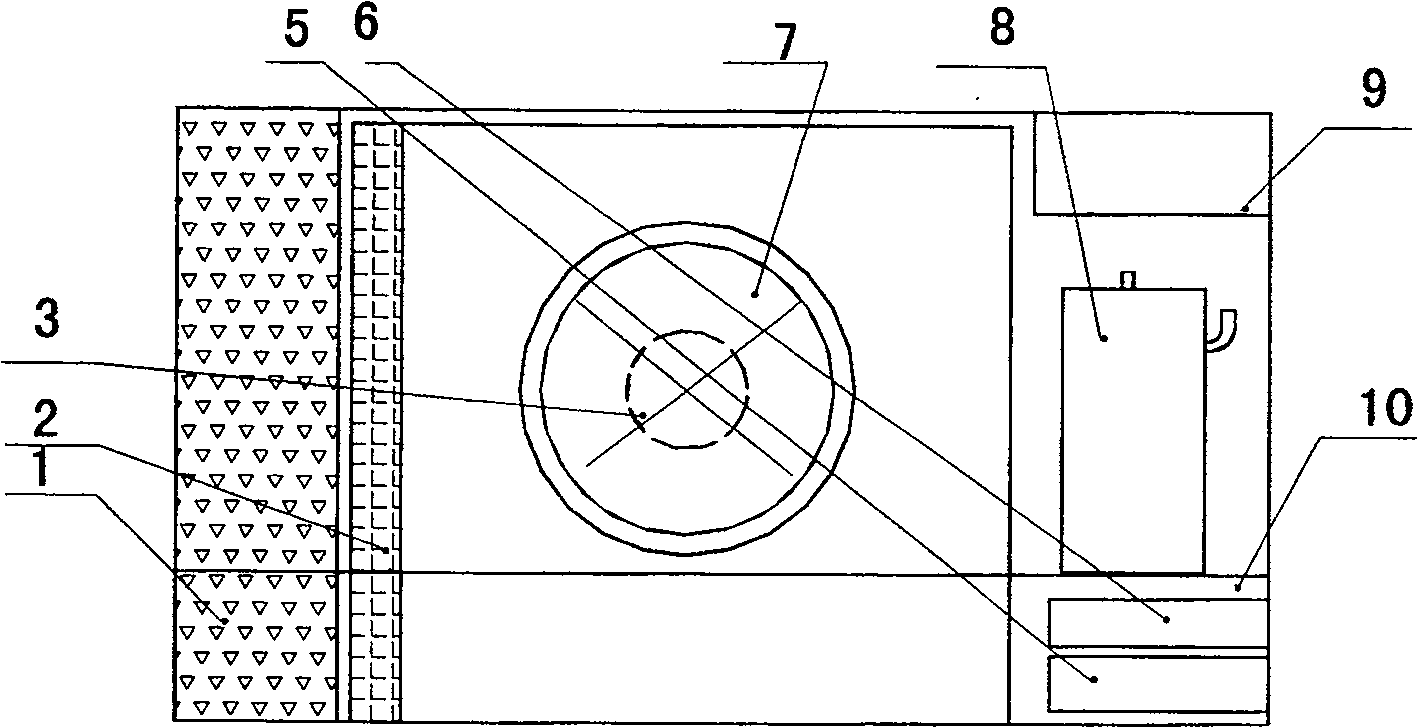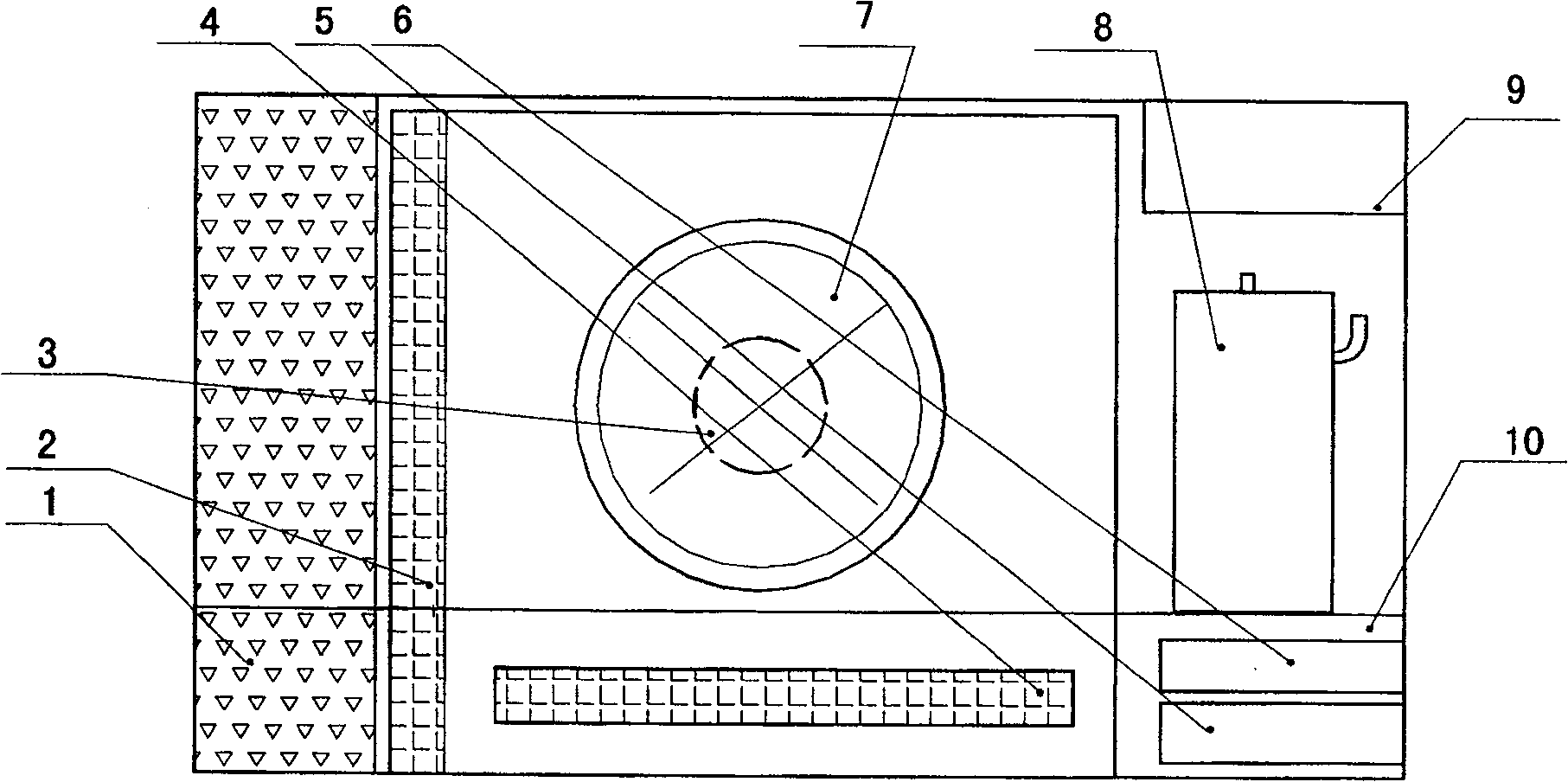Outdoor unit of air conditioner using axial-flow fan system
A technology of air-conditioning outdoor unit and axial fan, which is applied in air-conditioning systems, applications, household heating, etc. It can solve the problems of inconvenient air-conditioning system optimization, low heat exchange efficiency between wind and heat exchanger, and low heat exchange efficiency. Achieve the effect of improving heat transfer effect, increasing EER, and reducing heat transfer area
- Summary
- Abstract
- Description
- Claims
- Application Information
AI Technical Summary
Problems solved by technology
Method used
Image
Examples
Embodiment 1
[0017] refer to figure 1 , figure 2 , Embodiment 1 includes a box body, a heat exchanger 2, a motor 3, an axial fan 7, a compressor 8, a control system 9, and a water-cooled heat exchange mechanism. The water cooling heat exchange mechanism is composed of a latent heat exchanger 1 , a water pump assembly 5 , a water supply assembly 6 and a water tank 10 . The latent heat exchanger is composed of small units 11 connected one by one, and each small unit 11 is a hollow long hexahedron structure such as Figure 5 As shown, the wind passes along the hollow direction of the small unit 11 . Such as Figure 6 As shown, holes 12 can be arranged on the hollow long hexahedron of each small unit 11 of the latent heat exchanger 1, and the holes 12 opened on each hexahedron can be square holes such as Figure 7 As shown, it is also possible to open holes of other shapes, such as triangular holes and the like. The latent heat exchanger 1 is made of water-absorbing and water-permeable m...
Embodiment 2
[0019] refer to image 3 , Embodiment 2 has the same structure as Embodiment 1, except that the second heat exchanger 4 is arranged in the water tank, and the lower part of the heat exchanger 2 is placed in the water tank 10 . When part of the heat exchanger 2 is submerged in water, when the outdoor unit of the air conditioner is combined with the indoor unit of the air conditioner to perform a refrigeration cycle, the refrigerant in the refrigeration system flows as follows: compressor 8——heat exchanger 2——second heat exchanger 4—throttling device—indoor unit heat exchanger—compressor 8. The basic principle is: when the high-temperature and high-pressure refrigerant gas is discharged from the compressor, it first enters the heat exchanger 2 to exchange heat with the wind with a lower temperature and an increased humidity after heat exchange with the latent heat exchanger 1, and then in the Heat exchange with water in the heat exchanger 2, and then enter the second heat excha...
Embodiment 3
[0021] refer to Figure 4 , embodiment 3 has the same structure as embodiment 1, except that the second heat exchanger 4 is arranged in the water tank, and the heat exchanger 2 is placed in the box outside the water tank 10, and the outdoor unit of the air conditioner and the indoor unit of the air conditioner are combined for cooling During circulation, the refrigerant in the refrigeration system flows as follows: compressor 8—heat exchanger 2—second heat exchanger 4—throttling device—indoor unit heat exchanger—compressor 8. The basic principle is: when the high-temperature and high-pressure refrigerant gas is discharged from the compressor, it first enters the heat exchanger 2 to exchange heat with the wind with reduced temperature and increased humidity after heat exchange with the latent heat exchanger 1, and then enters the After the second heat exchanger 4 exchanges heat with the water in the water tank 10, a high-pressure and low-temperature refrigerant liquid is obtain...
PUM
 Login to View More
Login to View More Abstract
Description
Claims
Application Information
 Login to View More
Login to View More - R&D
- Intellectual Property
- Life Sciences
- Materials
- Tech Scout
- Unparalleled Data Quality
- Higher Quality Content
- 60% Fewer Hallucinations
Browse by: Latest US Patents, China's latest patents, Technical Efficacy Thesaurus, Application Domain, Technology Topic, Popular Technical Reports.
© 2025 PatSnap. All rights reserved.Legal|Privacy policy|Modern Slavery Act Transparency Statement|Sitemap|About US| Contact US: help@patsnap.com



